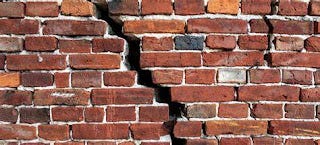Peter Greene, at Curmudgucation, explains:
School Choice Movement Fissures (2024 Edition)

FEB 27, 2024
Milton Friedman’s vision was never popular.
The idea of doing away with public school as a public good, a service provided to all citizens, funded and managed by some combination of federal, state and local government, and replacing it all with an unregulated free market of education services in which families had to find their own way with their own resources– that was never going to be a winner.

Replace a promise to provide every child with an education with a promise to just let everyone fend for themselves– not a popular idea. Even school vouchers–Friedman’s idea of a gateway to the future he really wanted to see–were never popular.
So they needed allies. The first batch of allies–segregationists who wanted school choice so they could choose not to send White kids to school with Black kids– were not terribly helpful from a policy standpoint.
The big obstacle–people really like and believe in the idea of public schools.
So the Reagan administration gave us A Nation At Risk, a manifesto masquerading as a research report that aimed to chip away at that public support for public schools. “Burn it all down” was still a fringe notion, but the Overton window was shifting, and the repeated assertion that public schools were failing was the crowbar used to shift it.
By the turn of the millennium, a partnership had emerged, between choicers (we need more options because competition will help), reformsters (we need standards and tests and incentives to force teachers to suck less), neo-liberals (the private sector can do this better), technocrats (let’s be data driven), accountability hawks (make schools prove they’re doing a good job), social justice fabulists (better education will magically erase poverty), and folks who had real concerns about real issues in education.
Overall, this patchwork alliance had the outward appearance of a bipartisan team-up, and that was just perfect for the Bush-Obama years and the sham that was No Child Left Behind
But what the alliance didn’t produce was results. Choice did not provide a sudden lifting of all boats, despite some data-torturing attempts to show otherwise. Data-driven instruction didn’t improve the data generated by either students or teachers. Underserved communities that were supposed to be rescued from failing schools by charters and choice too often had education policies done to them rather than with them. And then there was the gross miscalculation that was Common Core, which drew attack from all across the political spectrum.
By the mid 2010s, the deal was splintering. Robert Pondiscio was one of the first to publicly talk about it– the social justice wing of the choice movement was demanding more focus on actual education results, and the free market wing that was more committed to the idea of choice as an end in itself, whether it improved educational outcomes or not.
The alliance probably would have fallen apart under the simple force of gravity, but Trump arrived like a sledgehammer to bust it up. The social justice wing of reform bailed immediately, and the free market wing– well, Jeanne Allen typified the speedy shift from “I don’t want my issues coming out of his mouth” to much love for MAGAland.
The installation of Betsy DeVos signaled the rise of what I guess we can call Christianist Friedmanism. Friedman was always stuck arguing that a free market approach to education was just better, because reasons. But the DeVos wing of choicers have a better explanation– the unregulated free market approach to education is better because it is what God wants.
DeVos could never quite go full DeVos during her tenure–she even made it a point to make nice with charter fans even though, for her, charters are just a way to get to the full voucherism she favors. Still watching that Overton window.
Then COVID-19 came and set fire to the side of the house the Overton window is set in.
Culture warrior stuff was in. Pandemic response crazy-pants reactions made anti-government, anti-institution, anti-qualifications, anti-smarty-pants-with-all-their-book-learning sentiment Great Again. Frustrated activists like Chris Rufo and the Moms For Liberty founders, who had already been trying to break through with an anti-public school message for years suddenly found themselves with all sorts of traction. Jay Greene, who had worked as a school choice academic at the University of Arkansas, took a job with the christianist right wing Heritage Foundation, and from that new perch he announced the new alliance– “Time for the school choice movement to embrace the culture wars.”
So here we are, with the new alliance driving the school choice revolution bus. And like all the other alliances over the past seventy-some years, this one has some fault lines.
There’s certainly a difference of style. Educational dudebros like Rufo, Corey DeAngelis and Ryan Walters are pretty abrasive and aggressive, sometimes in ways that might strike some of the old guard as unseemly. In the days of the earlier alliance, reformsters caught on to the idea that belittling teachers and treating them as the enemy was not a useful way to get policies fruitfully implemented. Of course, one does not need to build lines of communication across a bridge if one’s goal is to just burn the bridge down.
That’s part and parcel of the biggest fracture line in the current choice movement, which is that the different factions have different goals.
The free market wing still argues for some sort of free market of education, with some combination of private and public (if they’re a little more reality based) choices for families with, perhaps, some sort of taxpayer subsidy to even the playing field a hair. You might even find one or two who believe there should be some guardrails, some accountability and oversight for such a system.
But their current allies from the culture war world are quite clear that they don’t actually like choice at all. Parents Defending Education, a piece of kochtopus astro turfing, has been clear, as with their recent piece warning that in some states taxpayers are being required to help fund LGBTQ charter schools! Moms For Liberty has been clear that some books should not be an available choice for students in schools, regardless of what those students’ parents might want.
In Georgia, the legislature is considering a Don’t Say Gay law to restrict teaching about gender identity in private as well as public schools. Neal McClusky has popped up reliably to argue that, no, real school choice means you can’t outlaw the choices you don’t like, but the culture panic MAGA christianist nationalists aren’t listening. Their goal is not a robust system of public and private choices for a wide variety of viewpoints, but a system, public or private or whatever, that reflects only their values. In short, the opposite of school choice.
I’m not sure how long the alliance will hold up, particularly since the traditional reformsters are, at best, minority partners here. This year’s CPAC, the annual conservative rant-o-pallooza, seemed to have plenty to say about making schools adhere to proper values, but hardly anything about actual school choice. Trump promised school vouchers, but only in the context of a promise to “restore God to His rightful place in American culture.”
Meanwhile, Chester Finn is trying hard, repeatedly, to stand up for the notion that maybe the culture wars and even free market affection are obscuring the goal of providing American children with a good education, and that some accountability and oversight might be useful, even as he waxes nostalgic for the days of bipartisan accomplishments that made the education system better.
Like many long-time reformsters, Finn fails to see how their brand of reform set the stage for today’s scorched earth attacks on public education (and, to be fair, public education’s failure to address some of its own issues also opened some doors as well). When Chris Rufo asserts that the path to universal school choice requires universal distrust of public education, he’s simply taking the arguments laid out in A Nation At Risk to their natural scorched earth conclusion.
There is perhaps another way of viewing the fissures in the current movement. On one side, reformsters who still have a bit of conservative-style love for institutions; on the other, those who would simply trash it all, right down to the concept of inclusive public schools. The former had a line, a point past which they felt one shouldn’t go because that would just be destructive. The latter are not concerned with any such line.
I don’t think it’s any mystery that we’re at this moment right now. The new shape of school choice both rising out of and pushing aside the old education reform movement sure seems to parallel the way MAGAthauritainism pushed aside the traditional conservative project and yet is also somehow rooted in it.
Or we can parse the fissures one other way: The movement today has three main threads:
* People who want to see better schools and think that school choice gets us there.
* People who see free-market based choice as a worthy end in itself
* People who want to see education delivered in different tiers according to class, but in all tiers delivered in alignment with a single set of christianist values, and see choice policies as a tool to get there
Time will tell, I guess, which group will do the best job of using the other two as a tool for achieving their own goals.












